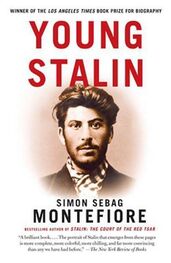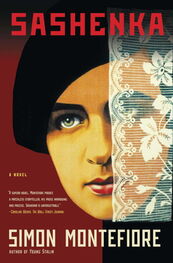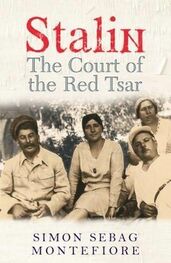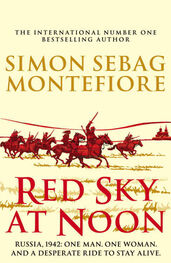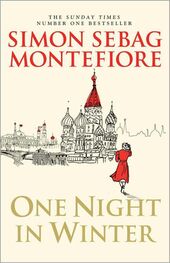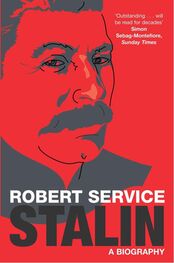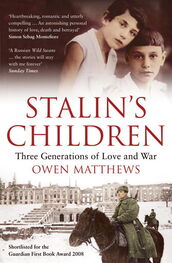So it turned out: many of the schoolboys remembered Stalin’s first day decades later. “I saw among the schoolchildren an unknown boy wearing a long arkhalukhi [formal Georgian coat] down to his knees, new boots with high legs, a tight wide leather belt and a black peak-cap with a lacquered visor shining in the sun,” recalled Vano Ketskhoveli, soon a friend. “This very short person, quite thin, was wearing tight trousers and boots and a pleated shirt with a scarf” and a “red chintz schoolbag.” Vano was amazed: “No one else was dressed like that in the whole class, the whole school. Schoolboys surrounded him” in fascination. The poorest boy was outfitted the best, the Fauntleroy of Gori. Who had paid for these beautiful clothes? Priests, tavern owners and police officers had surely played their part.
Stalin’s suffering had made him tough, for all his pretty clothes. “We avoided him out of fear,” says Iremashvili, “but we were interested in him” because there was something peculiarly “unchildish” and “excessively passionate” about him. He was an odd child: when he was happy, “he’d express his satisfaction in the most peculiar way. He’d snap his fingers, yell loudly and jump around on one leg!” [14]Whether written within the oppressive cult of personality when Stalin was dictator or in vicious opposition to him, all memoirs of his childhood agree that Stalin, even aged ten, exerted a singular magnetism. {41}
Somewhere around this time, perhaps just as he started school, he had another close brush with death. “I sent him out to school healthy in the morning,” says Keke, “and they bore him home unconscious in the afternoon.” He had been hit in the street by a phaeton. The boys enjoyed playing “chicken,” grabbing the axles of galloping carriages. Perhaps this was how Stalin was hurt. Once again the poor mother was “mad with fear” but the doctors treated him for free—or Egnatashvili was quietly paying the bills. Keke, her son said later, also called in a village quack who doubled as the local barber.
The accident gave him yet another reason, on top of the webbed foot, pockmarks and rumours of bastardy, for vigilance and inferiority, for being different. It permanently damaged his left arm, which meant he could never be the beau ideal of the Georgian warrior—he later said it prevented him dancing properly, but he still managed to fight. [15]On the other hand it would save him from conscription and probable death in the trenches of the First World War. Yet Keke was worried about how it would affect the future bishop. “When you’re a priest, sonny,” she asked him, “how will you hold the chalice?”
“Never mind, Mummy!” replied Soso. “Before I’m a priest, my arm will heal so that I’ll be able to hold up the whole church!” {42}
Playing chicken was not the only danger in the streets of Gori, which were notoriously out of the control of the Tsarist authorities. Henceforth, even though he would swiftly become the best scholar at his school, young Stalin lived a Jekyll and Hyde existence—choirboy-cum-streetfighter, half—overdressed mummy’s boy, half-urchin.
“There was hardly a day,” says Father Charkviani’s son, Kote, when “someone had not beaten him up, sent him home crying—or when he hadn’t beaten up someone else.” {43} Gori was that sort of town.
3. Brawlers, Wrestlers and Choirboys
Little Stalin now spent his spare time, away from Keke, on the streets of Gori, a liberated and violent place dominated by drinking, prayer and brawling.
Soso had every reason to escape from a home which was always dark and poor. “Day after day, Keke sat at her rickety sewing-machine.” There was nothing but “two wooden couches, a couple of stools, a lamp and a simple table covered in textbooks,” says a frequent visitor, Stalin’s singing-master Simon Gogchilidze. The tiny room was “always clean and tidy” but Stalin’s bed was made of planks: “As he got taller, his mother added a plank to make the bed longer.” But Soso now defied his mother. “If you knew how haughty and proud he is!” she grumbled. {44}
He was a typical Goreli, for the denizen of Gori was notorious throughout Georgia as a matrabazi , a boastful, violent scallywag. Gori was one of the last towns to practise the “picturesque and savage custom” of free-for-all town brawls with special rules but no-holds-barred violence. The boozing, praying and fighting were all interconnected, with drunken priests acting as referees. The saloon-bars of Gori were incorrigible stews of violence and crime. {45}
The Russian and Georgian administrators had tried to ban this dubious sport that originated as military training at a time when medieval Georgia was constantly at war. Despite the presence of a Russian barracks, the pristav —local police chief—Davrichewy and his few policemen could hardly cope: no one could quell Gori’s irrepressible lawlessness. It was no wonder too that, during the punch-ups, horses bolted and phaetons knocked down youngsters on the streets. Psychological historians attribute much of Stalin’s development to his drunken father, but this streetfighting culture was just as formative.
Gori, wrote the visiting writer Maxim Gorky, “has a picturesque and original wildness all of its own. The sultry sky, the noisy turbulent waters of the Kura, the mountains in the near distance with their cave city, and farther away the Caucasus with its snows that never melt.”
Gori’s yellow, turreted fortress was probably built by Queen Tamara in the twelfth century. When her empire fragmented, Gori became the capital of one of the Georgian principalities. [16]It was a stop on the route from Central Asia. Camels still passed through on their way to Tiflis, but the opening of the railway to the Black Sea in 1871 downgraded this once proud town into a chaotic provincial backwater with grand connections and a specially riotous tradition. With just one proper street (then Tsar Street, now Stalin Street) and one square, children played, amid ambling oxen, in winding alleys half flooded by open drains. There were just 7,000 Gorelis, half of them Georgians like the Djugashvilis, half of them Armenians, like Kamo’s family: the Armenians provided the entrepreneurs. There were just eighteen Jews. Much more important was Gori’s division into two main neighbourhoods because these were the teams in the town brawls: the Russian Quarter and the Fortress Quarter.
Town brawls, wrestling tournaments and schoolboy gang-warfare were the three Goreli fighting traditions. At festivals, Christmas or Shrovetide before Lent, both quarters fielded a parade led by transvestites or actors riding as “carnival kings” on camels and donkeys, surrounded by pipe players and singers in fancy dress. At the Keenoba carnival to celebrate Georgia’s 1634 victory over Persia, one actor played the Georgian Tsar, another the Persian Shah—who was soon pelted with fruit, then doused in water.
The males in each family, from children upwards, also paraded, drinking wine and singing until night fell, when the real fun began. This “assault of free boxing”—the sport of krivi —was a “mass duel with rules”: boys of three wrestled other three-year-olds, then children fought together, then teenagers and finally the men threw themselves into “an incredible battle,” by which time the town was completely out of control, a state that lasted into the following day—even at school, where classes fought classes. Shops were often pillaged. {46}
Gori’s favourite sport was the wrestling of champions, which resembled somewhat the biblical story of Goliath. It was a great leveller. Tournaments —tschidooba —took place in specially erected rings to the accompaniment of an orchestra of zurnas . Rich princes, like local landowner Prince Amilakhvari, and merchants, even villages, fielded their own champions, regarded with such esteem that they were addressed by the title palavani . Stalin’s godfather, Egnatashvili, was himself one of three champion brothers. Now he was older, and rich, Palavani Egnatashvili fielded his own champions. Even in old age, Stalin was still boasting about his godfather’s pugilistic triumphs:
Читать дальше
